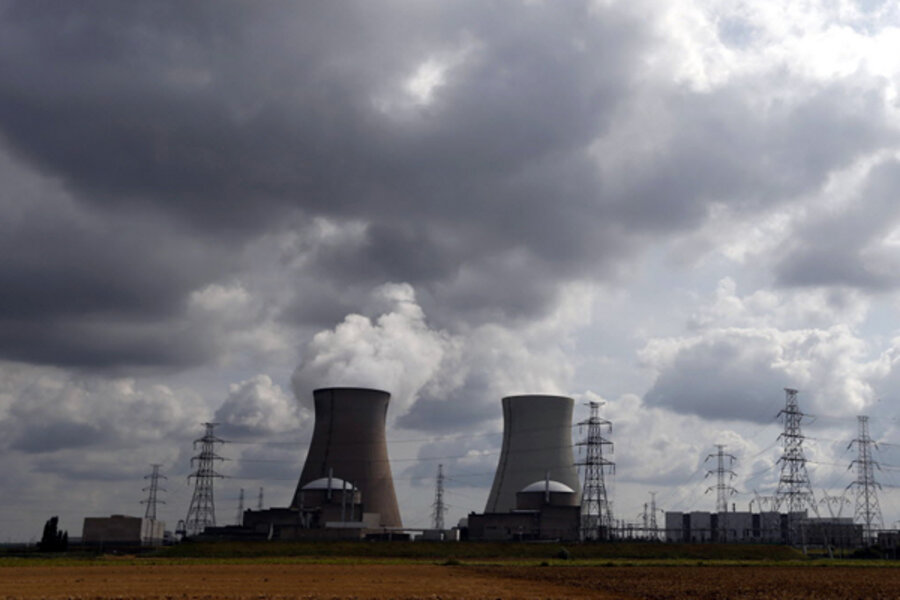Scientists could soon begin extracting nuclear fuel from seawater
Loading...
In stories, pirates may look for sunken treasure on the ocean floor, but real-life chemists hunt for treasure in the open sea. Seawater includes uranium in low concentrations but great quantities, and many scientists see it as a key to meeting the world's future energy needs through nuclear power.
"The ocean actually contains more uranium, although very dilute, than you can find in any land source in total," chemist Robin Rogers said, "which means we have a wonderful resource; it's just always been very expensive to get it out."
Rogers, who directs the University of Alabama's Center for Green Manufacturing, spoke today (Aug. 21) during a news conference dedicated to the latest research on harvesting uranium from the ocean. InnovationNewsDaily watched the conference online as a live stream.
Scientists have tried to extract uranium from seawater since the 1960s, Rogers noted. Research has been on-and-off, however, ever since people realized that extracting uranium from the ocean would be at least 10 times more expensive than from land because of the cost of sending out ships and crews and because of the low concentration of uranium in ocean water. Now modern-day methods are being applied to this decades-old search for a competitive, environmentally friendly alternative to traditional mining. [Documentary Explores the Nuclear Waste that Humans Leave Behind]
One kilogram of uranium from the sea
One of the most advanced uranium extraction efforts to date comes from the Japan Atomic Energy Research Institute, Rogers said. In 2003, a group of institute chemists performed a monthlong test in which they extracted one kilogram (2.2 pounds) of uranium from the open sea, using a large plastic braid with a uranium-attracting chemical stuck to it.
"It looked like a big kelp forest of the polymer with the extractant," Rogers said in response to a question from InnovationNewsDaily. The one-kilogram yield was "actually pretty good," he added.
Last year the U.S. Department of Energy assembled several national labs and universities to study whether they could beat the Japanese institute in efficiency and cost. The U.S. studies are just starting field testing, Rogers said. One test result, which the American Chemical Society announced today, was the reduction of the cost of ocean-mined uranium to $300 per pound, down from an estimated $560 per pound, using the Japanese method. (The American Chemical Society hosted today's news conference as part of its larger national meeting in Philadelphia.)
The $300-per-pound price is still five times costlier than traditional mining, and a Department of Energy-funded analysis found that to be infeasible in the current economy. [Shortage of Rare Metals Could Threaten High-Tech Innovation]
A shrimp-shell uranium net
Meanwhile, Rogers and his colleagues at the University of Alabama are looking for ways to make ocean mining kinder to the environment.
"We were worried about the adsorbents the Japanese were using," Rogers said. The plastic used by the Japanese institute does not break down in nature, he explained.
He found that shrimp and crab fishers on the Gulf Coast were paying hundreds of thousands of dollars to dispose of shells and waste. He took some of that waste material and made it into a plastic-like, uranium-attracting material that is rich in the heaviest types of chitin, a biodegradable chemical that lends strength to shrimp and crab shells and the crunchy outer skin of insects.
Rogers still needs to find out whether his chitin-based uranium net can last as long as needed to harvest uranium in the ocean. He suspects it won't be as durable as the Japanese institute's plastic, but it may be worth using because it will be less polluting and may be cheaper to manufacture, he said.
Research for a far future
His and other Department of Energy research still needs more work before dipping into the sea for uranium can compete with traditional mining. Rogers also acknowledged that some people, experts included, want nuclear energy to be banned entirely, for fear of what happens when nuclear power plants malfunction, as the Fukushima plant did in Japan last year.
Yet as the world's demand for energy inevitably grows, countries may find they need to tap nuclear energy to stay competitive. "Why would you not have the technology and the science ready in case you need it?" Rogers said.
You can follow InnovationNewsDaily staff writer Francie Diep on Twitter @franciediep. Follow InnovationNewsDaily on Twitter @News_Innovation, or on Facebook.







